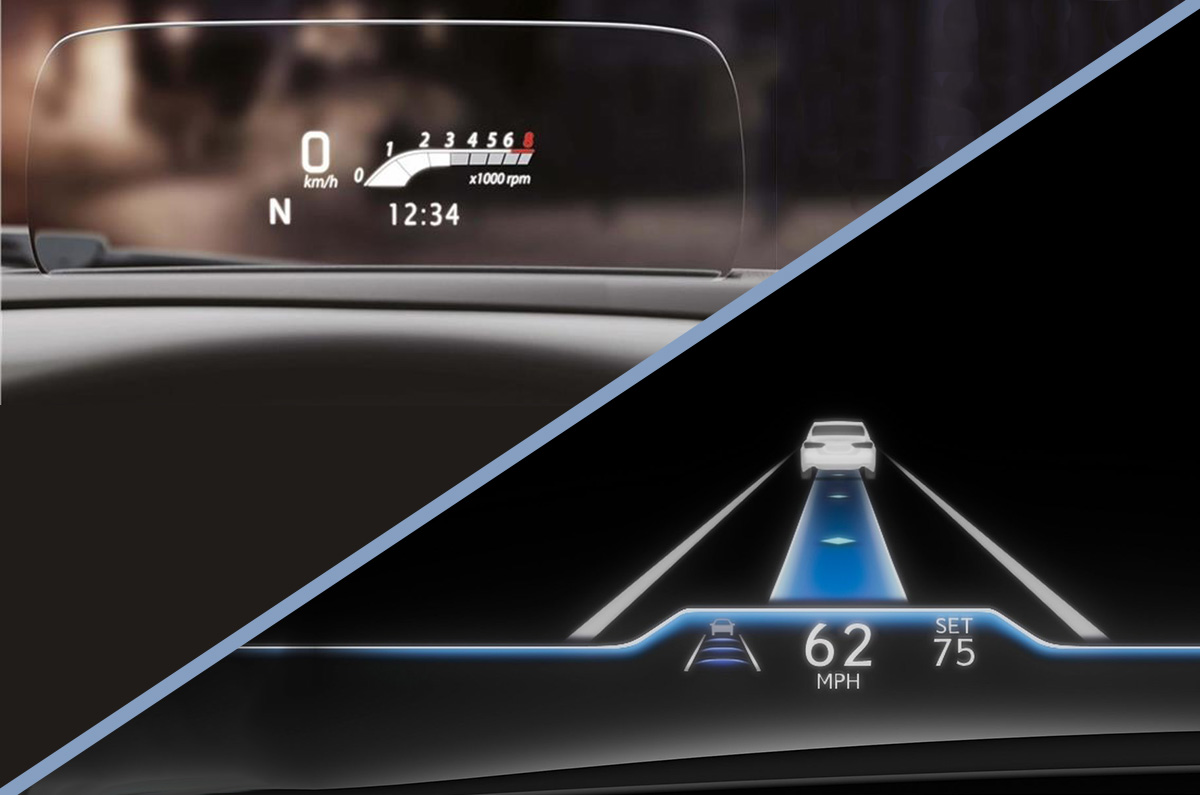
Most people who are aware of what a heads-up display (HUD) is associate it with aircraft and high-end automobiles. However, as with most technologies, this too has been trickling down to more mass segment models, and, with the launch of the updated Baleno next week, HUD technology has become a talking point for mass segment hatchback buyers.
Heads-up display (HUD): what is it?
Simply put, a heads-up display appears in the driver’s or pilot’s line of sight; the information is displayed on the windscreen or any other transparent panel, so that visibility remains unaffected.
HUD technology has its roots in aviation: the first iteration of the tech was seen used on British Royal Air Force (RAF) fighter planes as far back as in the 1940s, with their projected gunsights. The tech has developed significantly since, and each subsequent generation of HUD has been able to display more information with improved clarity. HUDs were originally designed to allow pilots to have access to all the pertinent information without having to look down at their instrument panel, hence reducing distraction and, more importantly, keeping them alive.
While the automotive world saw the merits in HUD technology, it wasn’t until the late 1980s that the system was incorporated in a car. In 1988, the limited Indy pace car edition of the Oldsmobile Cutlass convertible became the first automobile to have an HUD, with a relatively simple readout of the speedometer and indicators. The response to this feature was extremely positive, leading to Oldsmobile later offered it as an option across the Cutlass range, while other GM cars like the Chevrolet Corvette also offering it as an option. However, it was Nissan that became the first mass market carmaker to offer HUD as a standard feature with the 240SX in 1989.
Benefits of HUD
The HUD is primarily an active safety feature as it does not require the driver to look down at a conventional display panel. HUDs today can also project information like navigation guidance, warning lights and engine revs, thus considerably limiting the number of times a driver needs to take their eyes off the road. The feature also has a certain feel-good and tech-savvy factor going for it.
Types of heads-up display (HUD)
Currently, there are two main types of HUD systems available in the auto industry – projection-based and reflection-based. The former uses LED lights or, more recently, lasers, to project information like speed, turn-by-turn navigation, rev counter and real-time fuel consumption on a specially treated part of the windscreen. With this option, the final image is very clear, with little to no light bleed occurring in darker driving conditions. However, this system is costly and more complicated to execute.
On the other hand, reflection-based HUD systems, as the name suggests, uses a digital display that shows the desired information (making use of positive and negative spaces) reflecting on a specifically designed glass screen. This system isn’t as sharp and also has higher light bleed when used in dark environments, compared to the projection-based system. But what plays to its advantage is the significantly cheaper price tag and the fact that it can be used as a plug and play solution in most cars without much calibration. The simple principle it works on has also led to this type of HUD being the predominant choice of after-market HUD accessories, with some using a smartphone and an app to create the reflection.
Models in India with HUD
As mentioned earlier, HUDs have so far been limited to higher-end automobiles, and, according to data from JATO Dynamics Ltd, – a leading automotive data analytics and consulting company – a total of 34 models are currently equipped with an HUD, and all but the Kia Seltos and Toyota Camry are made by luxury carmakers. The data also shows that BMW – with 10 cars – has the maximum number of models with this technology.
When it arrives, the Baleno facelift will be the most affordable car in India to get this feature, and if well received by Indian buyers, we could end up seeing many more mass market brands offering this.
| Cars in India with a HUD | |
|---|---|
| Manufacturer | Model |
| Kia | Seltos |
| Toyota | Camry |
| BMW | X1 |
| BMW | 3 Series |
| BMW | X4 |
| BMW | Z4 |
| BMW | 5 Series |
| BMW | X5 |
| BMW | iX |
| BMW | X7 |
| BMW | 7 Series |
| BMW | 8 Series |
| Mini | Countryman |
| Jaguar | XE |
| Jaguar | I-Pace |
| Land Rover | Defender |
| Land Rover | Range Rover |
| Lexus | ES |
| Lexus | NX |
| Lexus | RX |
| Lexus | LS |
| Lexus | LC |
| Lexus | LX |
| Mercedes-Benz | A-Class |
| Mercedes-Benz | GLE Coupe |
| Mercedes-Benz | E-Class |
| Mercedes-Benz | S-Class |
| Volvo | XC90 |
| Audi | A7 |
| Audi | A8 |
| Audi | Q8 |
| Porsche | Panamera |
| Rolls Royce | Wraith |
| Rolls Royce | Ghost |
Information compiled by Jato Dynamics Ltd.
What are your opinions on HUD becoming more main strea,? Let us know in the comments section below.
https://ift.tt/1QZziP3



